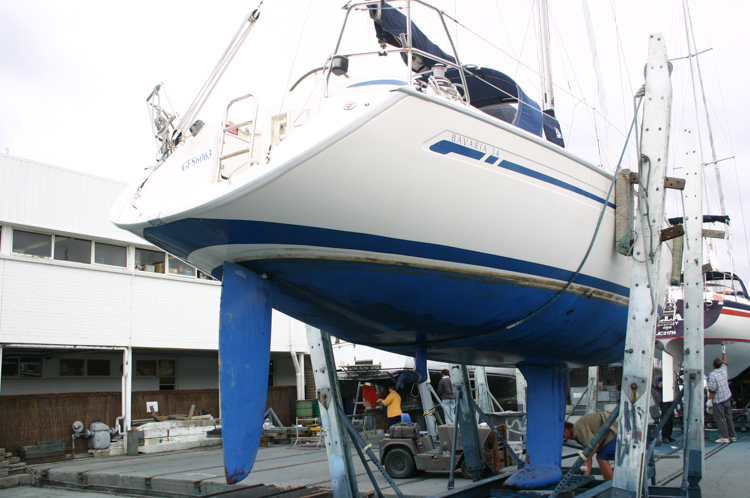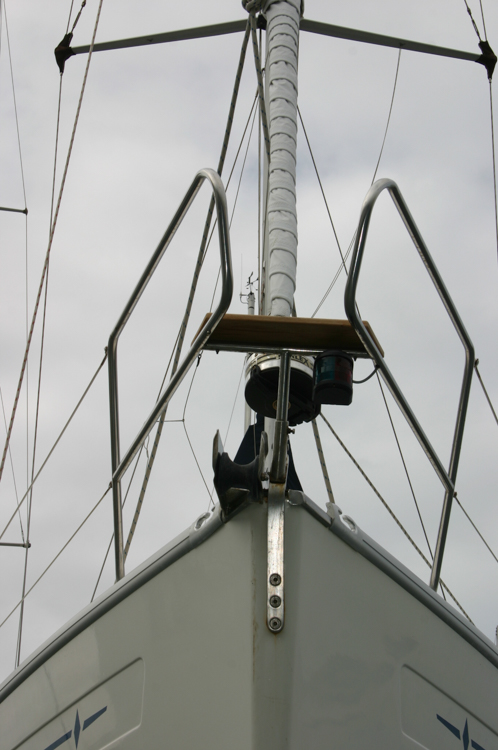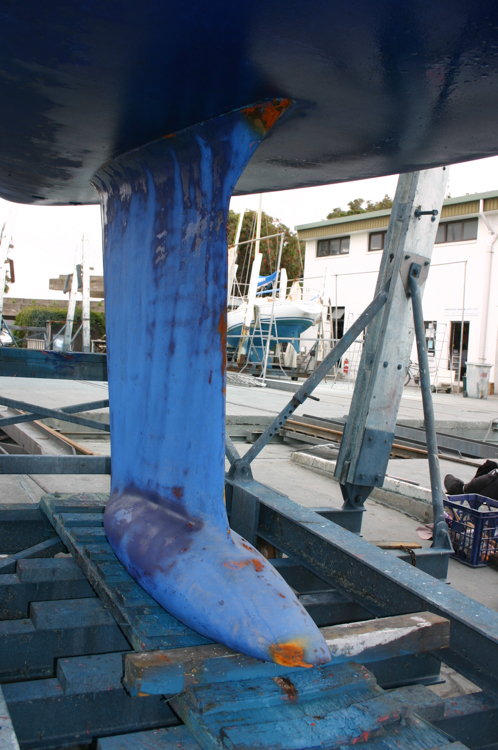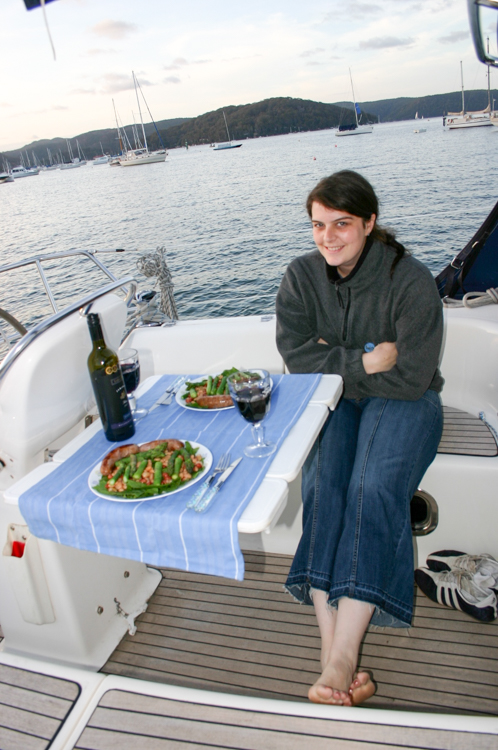When you buy a yacht, you need to get a survey, for all the same reasons that you need one when you buy a house (after all, you’re spending similar sums of money). In order for this to happen, the vessel has to come out of the water. This is not a cheap process, and the vendor pays. You can then choose to have a poke around yourself, or pay someone to have a look for you. We asked a few people for recommendations, and in the end settled on Alan, a local diesel engineer who also happened to have experience putting new Bavarias together for the Australian importer. He had a reputation for being picky and pedantic, which sounded just what we needed.
I asked if I could tag along, hoping that I might learn something about the large and complex item that I was (probably) about to purchase. He was more than happy, and in fact it turned out to be the most valuable day off work that I have ever had. Alan was a fount of knowledge on all things Bavaria, particularly which bits to look out for and which bits would need taking care of in the future.

Dragged out on a cradle
Inside, although we looked at every nut and bolt and panel, almost everything was perfect. The worst things that Alan could find were some rusty worm clips, and a misaligned drain vent to the gas storage locker. The engine looked fine, and the bilges were clean and dry. Towards the bow, there was some fresh water behind two of the bilge bulkheads; this seemed to have trickled down from above. In fact, this jogged Alan’s memory and he remembered having surveyed this boat before; apparently it had been involved in a low-speed collision in a marina and had had all the toe rails replaced on deck. He surmised that what we were looking at was seepage of rainwater through insufficiently sealed toe rail bolts. In fact, up on deck we could still see minor damage in the shape of a slightly crazed gel coat, an unsettled fairlead, and a slightly twisted pulpit; all, he said, nothing to worry about.
The base of the electric winch had been sitting in salt water (hardly surprising since it is mounted in a rubber tray in the bow anchor locker) and the alloy had rotted in an impressive blob of white deliquescence. This, said Alan, looked awful but was normal; in fact, some months later when I got around to scraping it off, I noticed that the task is specified in the annual maintenance procedure of the winch.
Below the waterline, the antifouling was thin but serviceable; it would need replacing in a few months. There was a snazzy folding prop which seemed to be in reasonable condition; we replaced the sail drive sacrificial anodes while we were there. There was one minor problem with the keel. In a few places, the epoxy had cracked, exposing the cast iron hull to the water, resulting in large rust patches. Alan explained that this is normal, but would have to be repaired during the next antifouling.

The pulpit is twisted slightly to the port side 
Rust shows damage to the epoxy coating
All in all, that was about it. A list to starboard (revealed by mismatched watermarks along either side of the hull) turned out to be caused by an empty water tank. There was a crack in the autopilot housing which would need to be replaced, and a leak in the aft cabin which seemed to come from rain dripping down the autopilot unit itself. Keeping the pedestal cover on when moored in wet weather would see to that. In fact, there did not seem to be any reason why we shouldn’t buy her, so we did.

Pindimara in her new home 
Cuisine afloat!